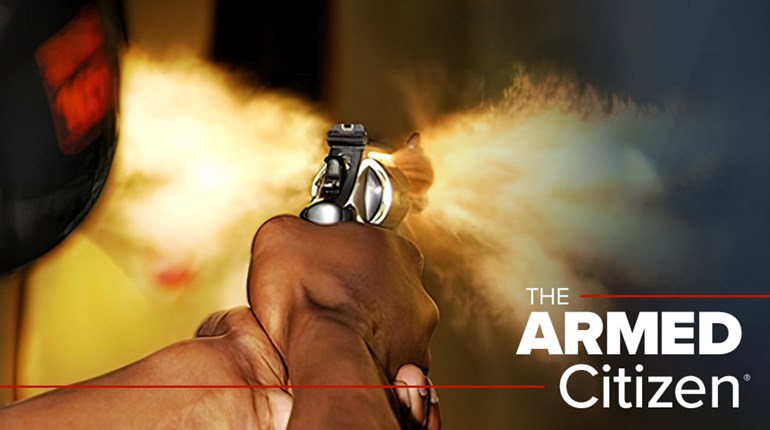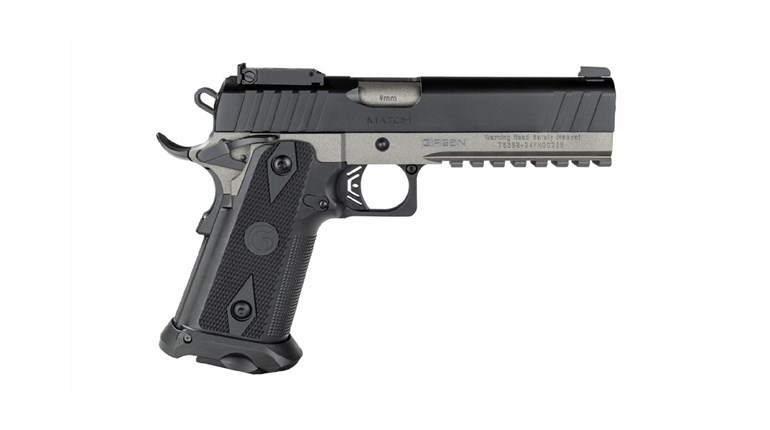
Photo: NRA Staff
I have been carrying a pistol concealed for about 20 years. Until recently, my method of carry, as I am a right-handed shooter, was always inside the waistband at the 4 o’clock position. It is the way things were done when I started carrying and it is the method I was most comfortable with day in and day out. I have always been fairly thin, so “printing” was a problem. (This is when the grip of a holstered pistol is evident under an untucked shirt or through a jacket.) Anyone looking for a concealed firearm could usually detect it on me. Larger framed folks don’t generally have the same problem.
Then, those around me seemed to become routine huggers. Overnight, the hug replaced or at least supplemented the handshake. Even a routine greeting evolved into some sort of pat on the back that would more times than not involve groping my holstered pistol. If the person knew me well, then it was a reassurance that I was armed and ready to help if trouble came. For those who did not, the reaction could be something more akin to me telling them they are ugly and their breath stinks.
I got tired of printing and having my “concealed” gun detected on what seemed like a daily basis. So, I started to think about the fast-growing trend toward a method of concealment called appendix carry. It promised to solve both of these problems; however, I initially had several reservations about a method that means holstering your gun on the inside of your waistband slightly to the right of your belly button (about where your appendix is located).
Initially, holstering my handgun in this manner inspired what seemed at the time to be a very legitimate fear of a bullet potentially destroying my critical infrastructure, including my femoral artery. There is a reason we have always been taught not to point a gun at anything we are not willing to destroy. Yes, a properly holstered gun must necessarily be exempted from this rule, but still, nothing felt right about the idea of having a muzzle pointed at that region of my body.
More of my friends began to appendix carry and they told me about their experiences, including how fast the gun can be drawn and the fact that it remains much better hidden in most scenarios. Finally, I was convinced to give it a try. I bought a quality appendix holster and started to carry my pistol with the chamber empty. I had regularly trained to operate the slide of a pistol prior to engaging targets because any gun I carried off-body in a bag without the trigger guard adequately protected was carried chamber empty.
It took some time for me to become physically comfortable with a pistol riding just to the right of my belt buckle. It took longer for me to become mentally comfortable with it. I finally began carrying with a loaded chamber, as I always had when carrying strong-side. The advantages of this form of carry became more apparent with each passing day. Today, I am sold on appendix carry and I don’t remember the last time I carried at the 4 o’clock position.
However, I should make something very clear: I recommended against appendix carry for those who are relatively new to handguns and to the concealed-carry lifestyle. If a guy like me, who has been carrying for a 20 years and who has safely fired hundreds of thousands of handgun rounds had serious reservations about carrying a handgun in this fashion, some strong-side-carry practice before graduating to appendix carry seems reasonable. This is because drawing and holstering the gun—the moment that the trigger is exposed—is the most dangerous moment of concealed carry, and I recommend much practice before going to chamber-loaded appendix carry.
While we gun owners are exceptionally responsible and safer with our guns than virtually any other potentially dangerous items in our lives, negligent and accidental discharges still do happen. The fact of the matter is that the consequences of one of these happening with appendix carry are almost always more serious than with strong-side carry. It is a simple matter of considering where the muzzle is pointing most of the time when carried by the two methods.
If a finger acquires the trigger when it should not, or if clothing snags a trigger during holstering or drawing, bad things can happen. Learning to be aware of these potential problems and avoiding them 100% of the time is the key. Strong-side carry allows for this critical education under safer circumstances.






























